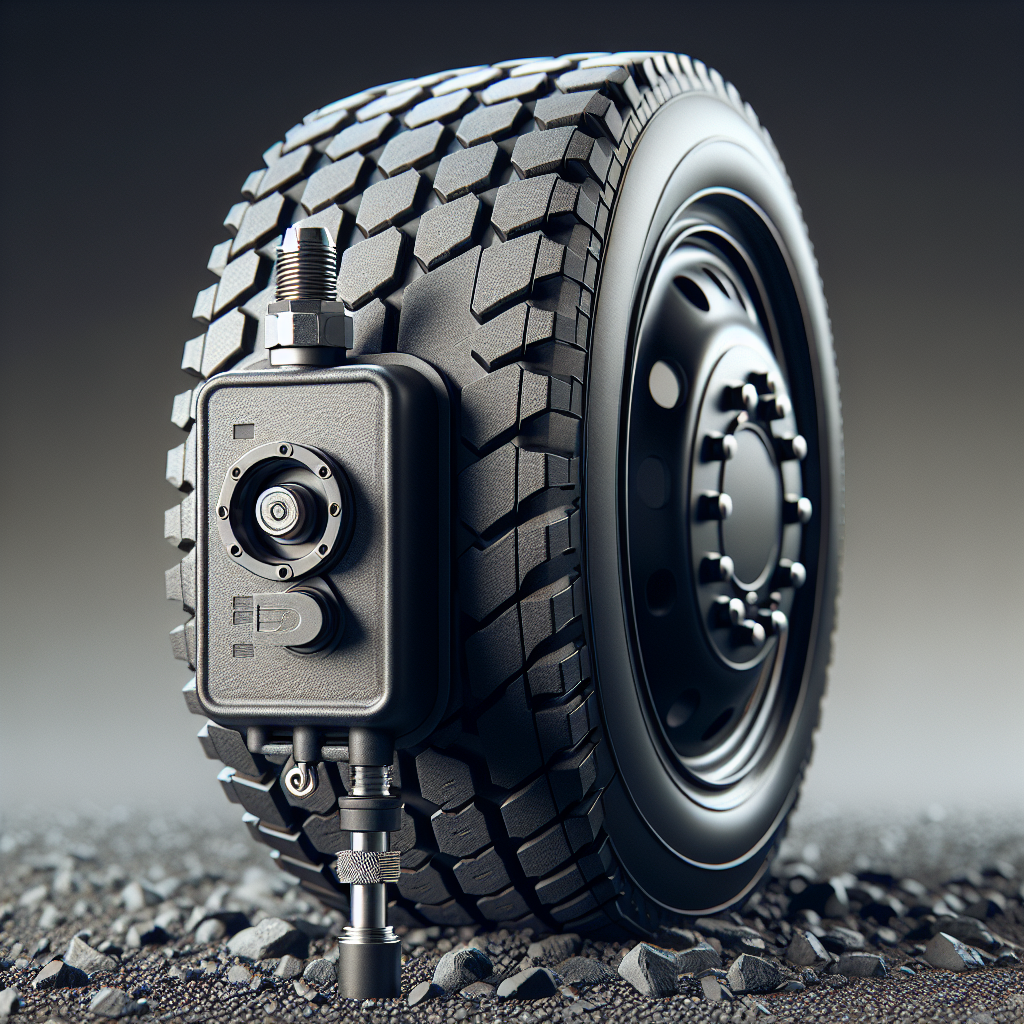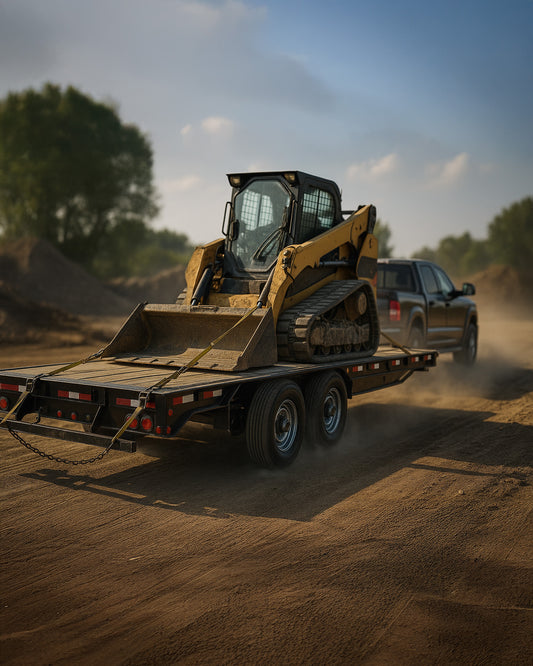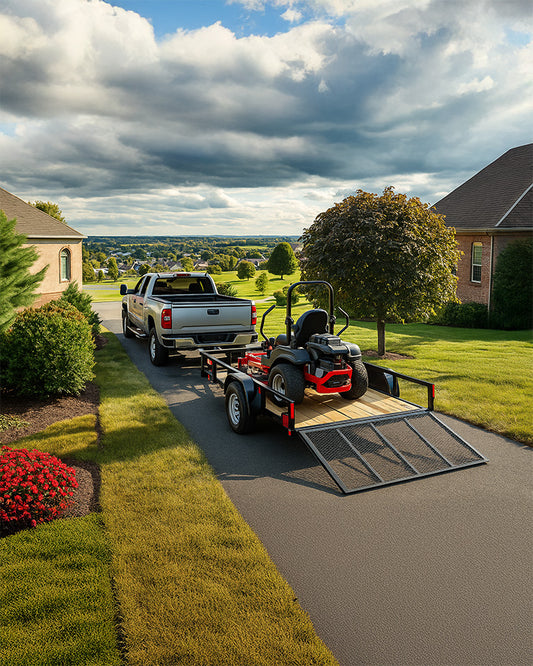

In the world of trailer safety and performance, TPMS sensors (Tire Pressure Monitoring System) play a crucial role. These advanced devices are designed to monitor the air pressure and temperature of your trailer's tires in real-time. Understanding the importance of TPMS sensors is essential for any trailer owner aiming to enhance safety and optimize tire performance.
Maintaining the right tire pressure is vital for several reasons:
- Safety: Under-inflated tires can lead to blowouts and accidents, putting both the driver and other road users at risk.
- Fuel Efficiency: Properly inflated tires reduce rolling resistance, which can improve fuel efficiency, saving you money in the long run.
- Tire Longevity: Monitoring tire pressure helps in prolonging the life of your tires by preventing uneven wear and overheating.
By integrating TPMS sensors into your trailer, you are not only investing in technology but also prioritizing safety and efficiency. The proactive alerts provided by these sensors enable you to take corrective action before minor issues escalate into serious problems.
Tow with peace of mind, knowing that trailerwatchdog is standing guard.
Essential Tools Required for TPMS Sensor Installation

Installing TPMS sensors effectively requires a set of essential tools to ensure a smooth and successful process. Having the right equipment at your disposal not only simplifies the installation but also helps avoid potential issues down the line. Below is a list of the key tools you will need:
- Tire Pressure Gauge: This tool is crucial for checking the existing pressure of your tires before installation, allowing you to make necessary adjustments.
- TPMS Tool/Programmer: A specialized tool for programming the TPMS sensor to your vehicle's system. This is essential for ensuring that the sensors communicate effectively with your trailer's onboard computer.
- Socket Wrench Set: A standard socket wrench set will be necessary for removing and reattaching the wheel nuts during the installation process.
- Torque Wrench: To ensure that you are tightening the wheel nuts to the appropriate specifications, a torque wrench is essential for achieving the correct torque value.
- Safety Equipment: Always prioritize safety; wear gloves and safety glasses to protect yourself during the installation process.
By assembling these tools beforehand, you can streamline the installation of your TPMS sensors, paving the way for optimized tire performance and enhanced safety on the road.
Step-by-Step Guide to Install TPMS Sensors
Installing TPMS sensors can seem daunting, but with a well-structured step-by-step guide, you can ensure that the process is straightforward and efficient. Follow these detailed instructions to successfully install your sensors:
- Prepare Your Workspace: Begin by selecting a clean, well-lit area to work. Gather all necessary tools and ensure you have ample space to maneuver.
- Check Tire Pressure: Use a tire pressure gauge to check the pressure in each tire. Adjust as necessary to meet the recommended levels.
- Remove the Wheels: Using your socket wrench, loosen the wheel nuts before lifting the trailer with a jack. Once elevated, remove the wheel completely.
- Install TPMS Sensors: Depending on your TPMS system, install the sensors either on the valve stem or inside the tire. Follow the manufacturer’s instructions for proper placement.
- Program the Sensors: Utilize the TPMS tool to program each sensor. This step involves syncing the sensors with your trailer's onboard computer to ensure accurate readings.
- Reattach the Wheels: After installation, carefully reattach the wheels. Use the torque wrench to tighten the nuts to the manufacturer’s specified torque settings.
- Final Checks: Once everything is back in place, double-check each tire’s pressure again. Make sure the TPMS system is functioning correctly by testing the sensors.
By following these concise steps, you will have successfully installed your TPMS sensors, enhancing the performance and safety of your trailer on the road.
Common Mistakes to Avoid During Installation

While installing TPMS sensors, there are several common mistakes that can compromise the effectiveness of the system. Being aware of these pitfalls can help you achieve a successful installation and improve tire performance. Here are some prevalent issues to watch out for:
- Neglecting Tire Pressure: Failing to check and adjust tire pressure before installation can lead to inaccurate sensor readings. Always ensure your tires are properly inflated to the manufacturer’s specifications.
- Improper Sensor Placement: Installing sensors incorrectly, such as placing them on the wrong valve stem or not securing them properly, can result in sensor failure. Always follow the manufacturer's guidelines for placement.
- Inadequate Programming: Skipping the programming step or not syncing the sensors with the trailer’s computer can lead to malfunction. Ensure you follow the programming instructions meticulously.
- Ignoring Compatibility: Using sensors that are not compatible with your trailer's TPMS system can lead to erroneous readings. Always check compatibility before purchasing sensors.
- Overlooking Torque Specifications: Not tightening wheel nuts to the correct torque specifications can lead to wheel detachment while driving. Always utilize a torque wrench to prevent this issue.
- Forgetting to Test the System: After installation, failing to test the TPMS can leave you unaware of any issues. Perform a thorough test to confirm that all sensors are functioning correctly.
By avoiding these common mistakes, you can ensure a smooth installation process and enjoy the benefits of a fully operational TPMS system.
Testing and Calibration After TPMS Installation

Once you have successfully installed TPMS sensors on your trailer, the next crucial step is testing and calibration. This process ensures that the sensors are functioning correctly and providing accurate data regarding tire pressure and temperature.
Protect your trailer
Initial Testing: Begin by performing a visual inspection of the installation. Check that all sensors are securely attached, and that the wiring (if applicable) is properly routed without any risk of damage. After this, power on the trailer and monitor the TPMS display for any warning lights or error messages.
Pressure Calibration: To calibrate the tire pressure settings, you will need a reliable digital tire pressure gauge. Compare the readings from the TPMS with the gauge to ensure accuracy. If there’s a discrepancy, follow the manufacturer’s instructions to recalibrate the sensors. This often involves adjusting the settings through the vehicle's onboard computer or a dedicated TPMS tool.
Temperature Calibration: Similar to pressure, it’s essential to verify the temperature readings provided by the TPMS. Use an infrared thermometer to measure the temperature of the tires and compare them with the readings from the sensors. Make adjustments as necessary to ensure that the TPMS is accurately reflecting the tire conditions.
Final System Check: After calibration, take the trailer for a short drive. Monitor the TPMS display for any alerts and ensure that the readings remain stable during the drive. It’s also a good idea to check for any warning lights that may indicate a malfunction.
By thoroughly testing and calibrating your TPMS after installation, you can rest assured that your trailer is equipped with a reliable monitoring system, enhancing your safety and performance on the road.
Benefits of Using TPMS for Trailer Performance

The integration of a TPMS (Tire Pressure Monitoring System) into your trailer setup offers a multitude of benefits that significantly enhance performance and safety. By actively monitoring tire pressure and temperature, TPMS provides real-time data that can prevent potentially hazardous situations.
Improved Safety: One of the primary advantages of using TPMS is the enhancement of safety while towing. Under-inflated or overheated tires can lead to blowouts, which can be catastrophic. With a TPMS in place, you receive immediate alerts if tire pressure drops or temperatures rise beyond safe levels, allowing you to address issues before they escalate.
Enhanced Fuel Efficiency: Proper tire inflation is crucial for optimal fuel efficiency. A well-maintained tire pressure ensures that the tires roll smoothly, reducing drag and improving fuel economy. By utilizing a TPMS, you can maintain ideal tire conditions, ultimately saving you money at the pump.
Extended Tire Life: Consistent monitoring helps in identifying tire issues early on, which can extend the life of your tires. By ensuring that your tires are always inflated to the recommended levels, you reduce uneven wear and tear, leading to fewer replacements and maintenance costs over time.
Peace of Mind: Knowing that your trailer is equipped with a reliable monitoring system allows you to focus on your journey without the constant worry of tire-related issues. With the data provided by TPMS, you can tow with confidence, ensuring that both your cargo and your vehicle are safe.
Tow with peace of mind, knowing that trailerwatchdog is standing guard, providing you with the essential information needed for a safe and efficient towing experience.




